We make a cork floor in the kitchen - the choice of material, laying and subsequent care
Cork flooring in the kitchen is the choice of practical and thoughtful people. Such a coating surprisingly harmoniously combines many qualities: practicality, environmental friendliness, durability, beauty. Cork is, first of all, naturalness; this material has a lot of advantages over competitors in the market of finishing materials.
The kitchen, as you know, is a special room - the "magic" of cooking takes place here, which means that all surfaces, especially the floor, undergo a daily test of strength, durability and the ability to preserve the beauty granted by the manufacturer. According to many, it is precisely the cork that can cope with impromptu testing “excellently”.
Secrets of the uniqueness of the material
Cork is a substance that forms the upper layer of oak bark after the death of cells. The life span of cork oaks can reach one hundred and fifty years; the highest grade of material is “mined” precisely from the trees of the old-timers.
Removing the bark, starting with the twenty-fifth anniversary of the tree, is carried out with a nine-year interval.
Do not worry - this does not bring destructive harm to the oak, because the bark has the ability to fully recover over time. After several such procedures, the oak body “envelops” the cork, concealing a lot of usefulness.
The main difference between the cork oak bark is the absence of intercellular voids. And its composition itself is “worthy of attention” - waxes, suberin, lignin are present here.
Commodity forms of coating
Cork flooring is represented by such commodity forms:
- Sticky
Tiles with or without a topcoat. The fixing method is quite obvious - laying on glue.
- Technical
These are rolls, plates or granules. The intended purpose is the formation of an insulating and sound insulating layer under the main coating.
- Floating floor
Or as it is called in common people - cork flooring. The product is a rectangular MDF panel, covered with a layer of cork. The fixing method is classic lock joints.
Difficulties in choosing: advantages and disadvantages of cork in the kitchen
The advantages of cork flooring in the kitchen include:
- durability. Warranty period from the manufacturer - at least ten to fifteen years;
- chemical resistance. The coating is chemically inert - no reaction to household chemicals;
- fire safety. The cork does not support the combustion process;
- non-slip surface. In terms of domestic injuries, this is a significant advantage over tiles and linoleum;
- ability to recover. The coating does not deform from heels and the fall of diverse objects;
- antistatic effect. Cork does not attract dust - this factor is especially relevant for families with allergies.
- environmental Safety. The material is safe for health, does not emit toxic substances;
- UV resistance. Cork does not fade.
Among disadvantages Cork floors in the kitchen include:
- stacking difficulty. If the coating is not thoroughly sealed, contact with, say, hot liquid can provoke their divergence;
- color gamut. A juicy color scheme in the interior of the kitchen is not compatible with cork flooring.Something will have to be sacrificed.
How to choose a cork for the kitchen floor
Manufacturers of cork coverings and professional layers recommend choosing a material with a special coating for the kitchen. It is easy to clean it from pollution: neither frequent cleaning, nor spilled water are not afraid of it.
As for the already mentioned commodity forms of cork, for the kitchen, the most preferable option is sticky. The fact is that floating floors from MDF panels are sensitive to “attacks” of water and other liquids, as well as temperature changes - despite their careful processing with special compounds.
Adhesive cork flooring technology
As you know, the key to a good sex is quality preparatory work, in particular, a carefully leveled foundation.
Step by step:
- eliminate all roughnesses of the foundation, even the smallest;
Remember! The slightest bulge today is a hole in the cork tomorrow!
- make markup;
Lay the coating should be from the center of the room. The selection of elements according to the drawing is not required.
- treat the seams (on the inside) with sealant;
- stick the plates apart: the optimal distance between their joints in adjacent rows is from 30 centimeters;
- “decorate” the center of the kitchen with solid tiles, place pieces of a suitable size near the walls;
- cork flooring is carried out on a special, instantly setting adhesive;
For full bonding, it takes from 30 minutes to 48 hours - it all depends on the brand of glue you choose.
- apply special oil / varnish to the floor according to the manufacturer's instructions.
If you understand, then do-it-yourself special skills are not required for cork flooring with your own hands - you just need to follow the manufacturer's recommendation and not do improvisation.
Coating care
With proper care, the cork floor in the kitchen can serve you faithfully for more than a decade. Manufacturers and experienced users are advised not to neglect the use of special tools: polishing and cleaning compounds, which form a protective film on the surface of the material and give it a special shine. In all other respects, recommendations for cleaning the kitchen floor from cork are no different from recommendations for caring for other coatings.
Do not try to rub the cork floor with metal washcloths, hard washcloths and other “aggressive” devices!
Cork flooring in the kitchen - reviews
For the most part, reviews of cork floors in the kitchen are positive - and in construction forums this trend is seen especially clearly. A few disappointments are associated either with installation errors, or with the initially incorrect choice of the type of cork for the catering unit.
Cork coating is the best option for the kitchen floor in a house where there are children or people prone to allergic manifestations, where they care about cleanliness, health, safety, where they appreciate natural beauty and individualism.

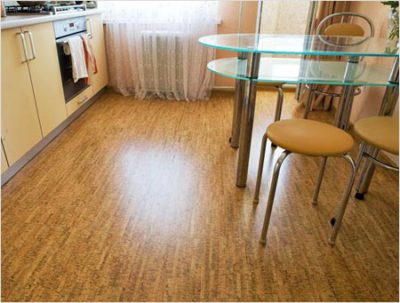
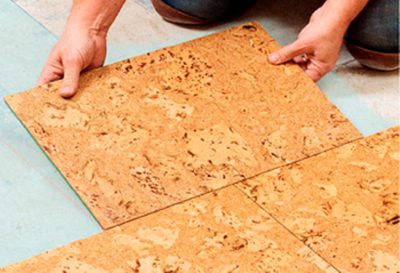
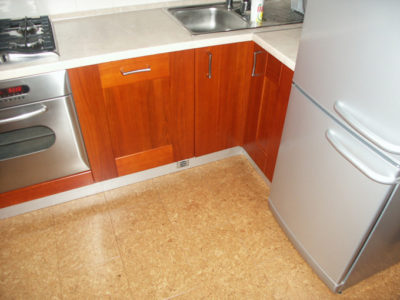
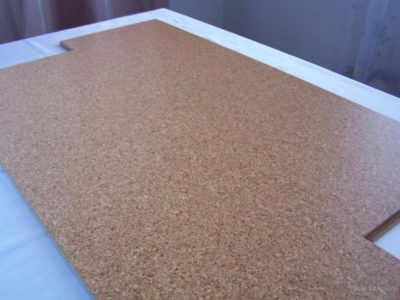
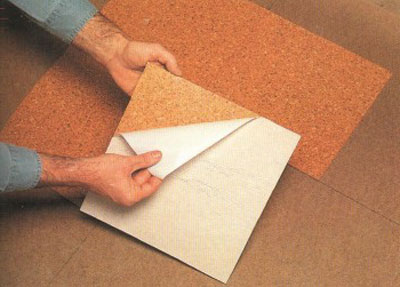
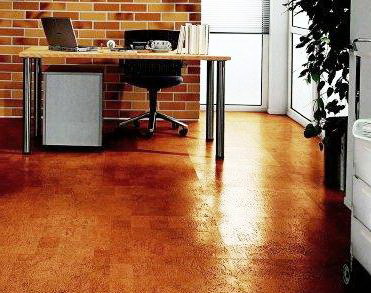

6 comments